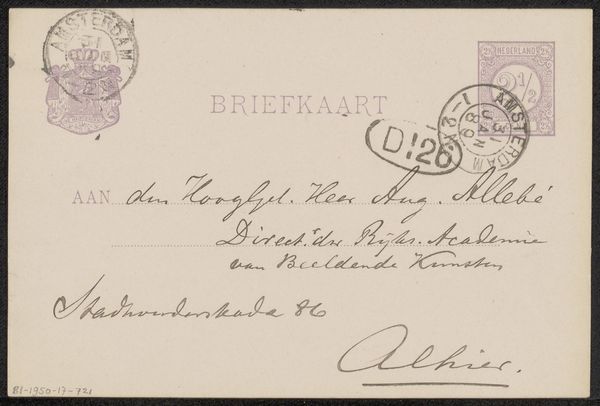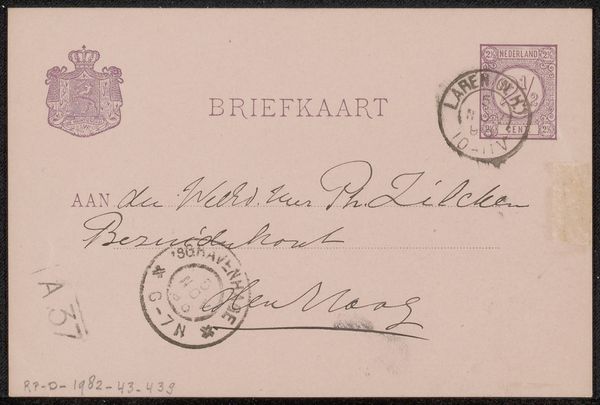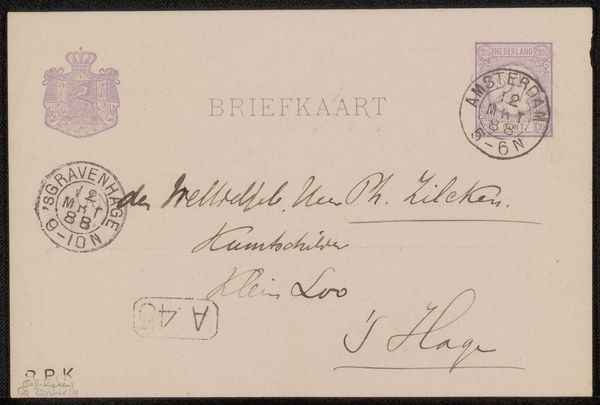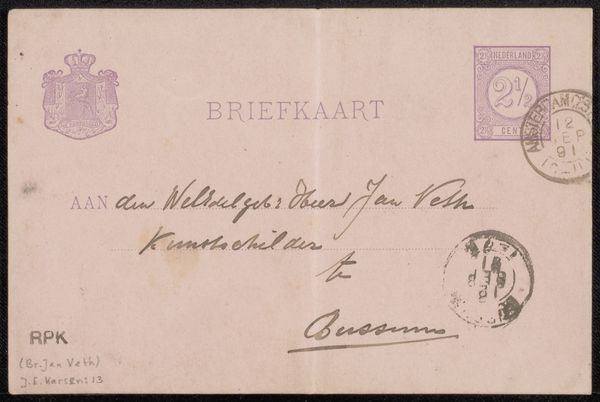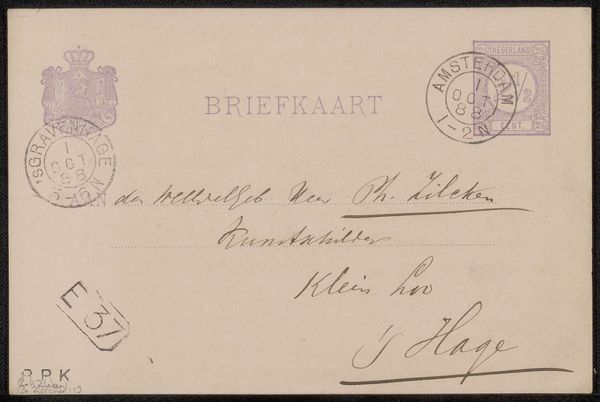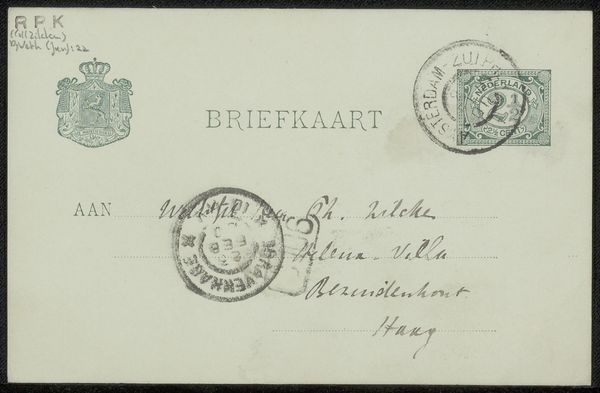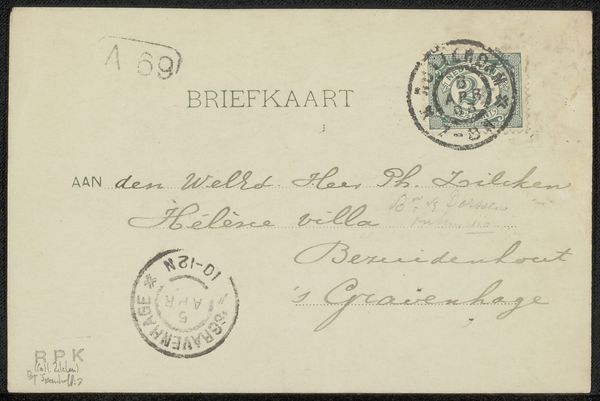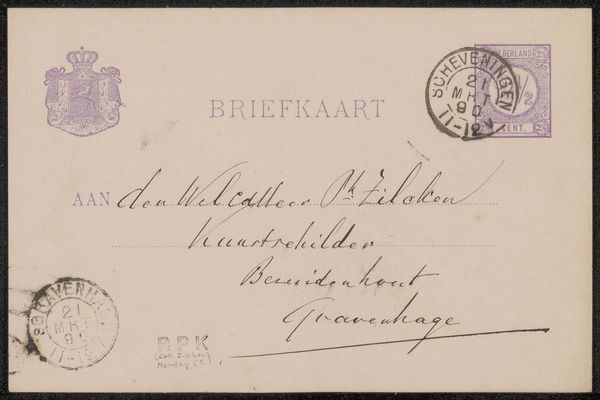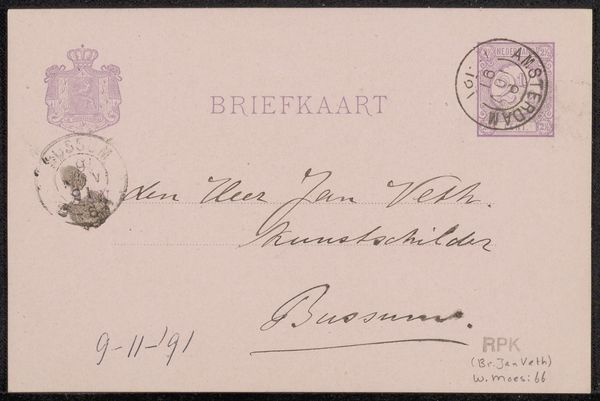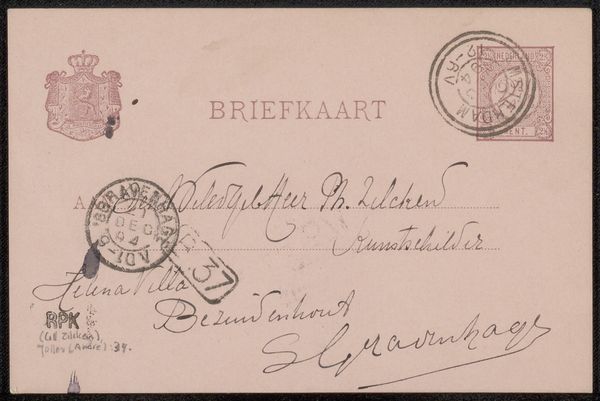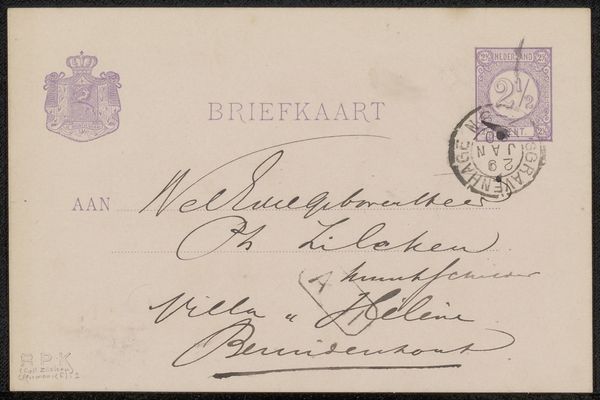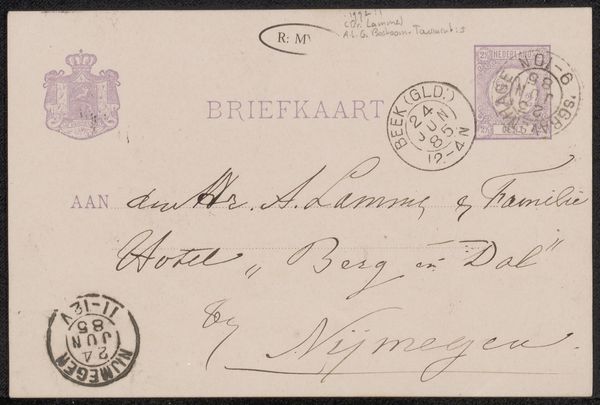
drawing, paper, ink, pen
#
portrait
#
drawing
#
hand-lettering
#
old engraving style
#
hand drawn type
#
hand lettering
#
paper
#
personal sketchbook
#
ink
#
hand-drawn typeface
#
pen-ink sketch
#
pen work
#
sketchbook drawing
#
pen
#
post-impressionism
#
sketchbook art
Copyright: Rijks Museum: Open Domain
Curator: Anton Mauve, known for his landscapes, created this small yet intriguing ink drawing titled "Briefkaart aan Philip Zilcken," likely in 1888. It is currently held at the Rijksmuseum. Editor: It's surprising, isn't it? The subdued color palette is reminiscent of something like faded memories. There's a textural contrast between the controlled script and the cancellation marks. The off-centered placement of all of the written content is somewhat disconcerting to my eye, but creates a rather intimate, casual experience. Curator: Yes, it's an interesting tension. Notice the formal elements: the carefully rendered, almost calligraphic script of the address contrasts with the utilitarian postal marks—a dichotomy that speaks to the period's social structures. Semiotically, the stamp acts as a symbol of officialdom overlaying a personal message. Editor: And that postal stamp! Circular shapes often represent unity and continuity. That particular choice of shape emphasizes the recurring symbolic significance. The physical journey of this very postcard—hand-delivered intentions shaped in ink. The image carries cultural significance beyond simply correspondence, a tangible object loaded with human relationships. Curator: Precisely. The act of writing itself is central here. Mauve wasn't just conveying information; he was participating in a visual dialogue with Zilcken, each stroke laden with intention. The linear quality, created with pen and ink on paper, provides its minimalist aesthetic, relying only on the purity of form, composition and legibility. Editor: The "Kleine Los" house. Do you know what kind of impact it may have had on these individuals at that point in time? The choice of writing shows this moment in time holds intimate sentiments to it as well. The location in the missive grounds this message within lived, concrete experiences and emotions. The historical value and impact in a location as the home helps provide layers to their symbolism and memory. Curator: This work operates on both a micro and macro scale, revealing intimacy from late 19th-century correspondence between associates and their lived experience that continue resonating centuries later. It is the elegance of efficient communication; nothing superfluous here. Editor: This artifact speaks of bygone relationships and experiences. Every element tells stories within that delicate network which is time. This examination reveals, once more, the beauty of our humanity through history itself!
Comments
No comments
Be the first to comment and join the conversation on the ultimate creative platform.
